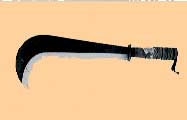September 25, 2005
Elastic Instability
It is quite well known that it takes far less energy to squash (elastically, that means not permanently) a rubber hose or a soda straw, than to inflate it from the inside out.
In fact, a while ago I used a piece of plasticized PVC hose for vacuum, and it ended up being squashed even if the pressure differential is just 1 bar, well below the maximum allowable pressure for that hose.
The reason for these occurences is elastic instability, a phenomenon that has relevant importance for all kind of structures. It is not only straws that get squashed but also - and more importantly - struts and columns that can bend and buckle under load.
Elastic instability has been treated sistematically, and although the description of this phenomenon is rather heavy on matemathics (there's plenty of differential equations and matrix algebra) but the core issue is one of energy distribution. Every configuration of the system (that is, in layterms, shape of it) has an associated level of potential energy, and the energy distribution changes with the applied load. It happens that under certain conditions an load intensity, the system configurations with lower energy are the buckled ones - bent struts and columns, squashed hoses etc. Relieving the load, if the deformation is elastic, the system will return to its original shape... but if you cycle 1000 times, fatigue can kick in and shot everything to hell again.
This is another of those annoying cases in which nature doesn't really behave like we would like, and makes things more complicated than we desire. And we have to deal with it, this is no dream world.
In fact, a while ago I used a piece of plasticized PVC hose for vacuum, and it ended up being squashed even if the pressure differential is just 1 bar, well below the maximum allowable pressure for that hose.
The reason for these occurences is elastic instability, a phenomenon that has relevant importance for all kind of structures. It is not only straws that get squashed but also - and more importantly - struts and columns that can bend and buckle under load.
Elastic instability has been treated sistematically, and although the description of this phenomenon is rather heavy on matemathics (there's plenty of differential equations and matrix algebra) but the core issue is one of energy distribution. Every configuration of the system (that is, in layterms, shape of it) has an associated level of potential energy, and the energy distribution changes with the applied load. It happens that under certain conditions an load intensity, the system configurations with lower energy are the buckled ones - bent struts and columns, squashed hoses etc. Relieving the load, if the deformation is elastic, the system will return to its original shape... but if you cycle 1000 times, fatigue can kick in and shot everything to hell again.
This is another of those annoying cases in which nature doesn't really behave like we would like, and makes things more complicated than we desire. And we have to deal with it, this is no dream world.
Comments:
Post a Comment


